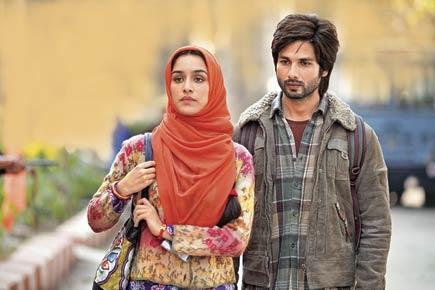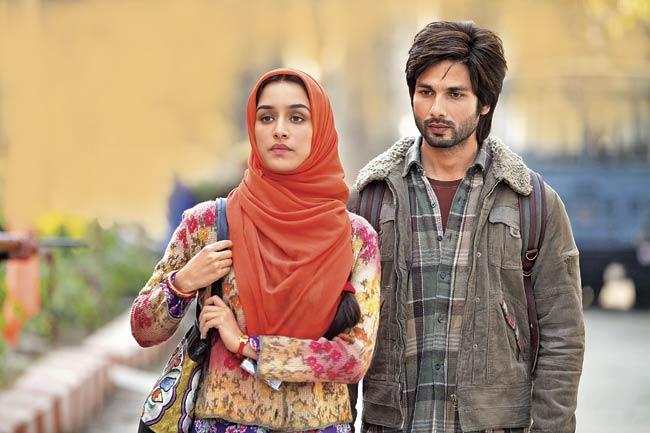Let us, for a moment, assume that Vishal Bhardwaj’s latest movie, Haider, based on Shakespeare’s Hamlet, is a fair depiction of life and events in the Kashmir Valley, especially during the turbulent 1990s

 Let us, for a moment, assume that Vishal Bhardwaj’s latest movie, Haider, based on Shakespeare’s Hamlet, is a fair depiction of life and events in the Kashmir Valley, especially during the turbulent 1990s. Let us also assume that it offers what is touted as the ‘alternative narrative’, the ‘other version’ the untold story of excesses committed by the Indian Army, extensive violation of human rights by a ruthless state, and suppression of democratic dissent.
Let us, for a moment, assume that Vishal Bhardwaj’s latest movie, Haider, based on Shakespeare’s Hamlet, is a fair depiction of life and events in the Kashmir Valley, especially during the turbulent 1990s. Let us also assume that it offers what is touted as the ‘alternative narrative’, the ‘other version’ the untold story of excesses committed by the Indian Army, extensive violation of human rights by a ruthless state, and suppression of democratic dissent.
But first, a few words about the film. The script is taut and near-perfect (we are not looking at factual accuracy, but word craftsmanship). It has been penned by Vishal Bhardwaj and journalist-turned-writer-turned-Jack-of-many-trades Basharat Peer. A disclosure would be in order at this point: I have known, or used to know, Basharat Peer for long and have fond memories of conversations with him over coffee. I find, or found, him warm and affectionate. He has, or had, that rare human quality of being self-effacing.
ADVERTISEMENT

Telling the alternative narrative, the other version, is no doubt important. But whom are you telling it to? Who is Bhardwaj trying to reach out? No, he is not trying to entertain; he is trying to inform his audience
The film is hauntingly melancholic. It captures the multi-hued colours of the Kashmir Valley. Brooding depression to menacing rage, the many emotions of a modern day Hamlet form the shades of the palette from which the colours have been dexterously used. The cast excels itself. In flashes theatrical, in large measure understated and restrained, the performance is laudable. I hope I do not sound like movie critics — I am not, and my knowledge of films is extremely limited. These are merely impressions that should serve to bear witness to the fact that I mean no malice.
Which takes me to where I began. Let us assume that Haider is the much-awaited other version of the truth about Jammu & Kashmir; a truth that, as most critics have caw-cawed, Bollywood has not dared to confront till now. The Indian Army picks up innocent men; the men go missing; they are never heard of again. If found, they are dead as it happened in reel life with Haider’s father, a good doctor and a caring soul. There is a Hamletian twist to the story Haider’s mother and uncle conspired to get rid of his father. But that’s a footnote that need not distract us. We must rage against the Army.
Telling the alternative narrative, the other version, is no doubt important. But whom are you telling it to? Who is Bhardwaj trying to reach out? No, he is not trying to entertain; he is trying to inform his audience. But surely the film should also be watched by Kashmiris in the Valley, the many Haiders after whom the character and role of Haider have been fashioned? Surely they need to feel assuaged that their victimhood has not gone unnoticed?
Sadly, that won’t be possible. The cinemas in Srinagar, and there were many in the city once upon a time, as also the theatres in other places in the Valley, have been dysfunctional for years now. They were shut down after Islamists, the alias of the Valley’s Haiders, decreed watching films as ‘un-Islamic’. Some of the cinemas lie in ruins, others are hollow shells, a pathetic reminder of their glory days. The properties are protected by, who else, the Indian Army!
So where do Kashmiris watch movies? On their television sets, on laptops, behind closed doors, away from the prying eyes of the Haiders who roam the streets, waiting for an opportunity to demonstrate their hate towards India, the despise they feel towards the Army, for suppressing the urge for azadi what we Indians refer to, in our callous ignorance, as terrorism.
But maybe I am wrong. It is possible Haider was not meant for an all-Kashmiri audience in Kashmir. It was meant for those who commend the Army, those who do not take to separatism kindly, and those who believe in the other ‘other version’, that version which includes the brutalities committed by Haiders wielding Kalashnikovs and gren-ades, the hideous ethnic cleansing of the Valley, the tragic exodus of Pandits who were given three choices, much like those hounded by the Islamic State: Convert, leave or die.
I guess the idea is to make us feel guilty. Just as Maachis was meant to make us feel awful that Khalistanis were put down ruthlessly. Haider, like Maachis, is meant to convince us that there’s nothing called terrorism; it’s all a figment of our imagination. It’s immaterial that there’s a yawning gulf between real life and reel life. So, come, let’s wring our hands in shame for not realising the truth all these years.
The writer is a senior journalist based in the National Capital Region. His Twitter handle is @KanchanGupta
 Subscribe today by clicking the link and stay updated with the latest news!" Click here!
Subscribe today by clicking the link and stay updated with the latest news!" Click here!







